
Electrical telegraphs were point-to-point text messaging systems, primarily used from the 1840s until the late 20th century. It was the first electrical telecommunications system and the most widely used of a number of early messaging systems called telegraphs, that were devised to communicate text messages quicker than physical transportation. Electrical telegraphy can be considered to be the first example of electrical engineering.

Jean-Maurice-Émile Baudot, French telegraph engineer and inventor of the first means of digital communication Baudot code, was one of the pioneers of telecommunications. He invented a multiplexed printing telegraph system that used his code and allowed multiple transmissions over a single line. The baud unit was named after him.

Samuel Finley Breese Morse was an American inventor and painter. After having established his reputation as a portrait painter, in his middle age Morse contributed to the invention of a single-wire telegraph system based on European telegraphs. He was a co-developer of Morse code in 1837 and helped to develop the commercial use of telegraphy.

Telegraphy is the long-distance transmission of messages where the sender uses symbolic codes, known to the recipient, rather than a physical exchange of an object bearing the message. Thus flag semaphore is a method of telegraphy, whereas pigeon post is not. Ancient signalling systems, although sometimes quite extensive and sophisticated as in China, were generally not capable of transmitting arbitrary text messages. Possible messages were fixed and predetermined and such systems are thus not true telegraphs.
A duplexer is an electronic device that allows bi-directional (duplex) communication over a single path. In radar and radio communications systems, it isolates the receiver from the transmitter while permitting them to share a common antenna. Most radio repeater systems include a duplexer. Duplexers can be based on frequency, polarization, or timing.
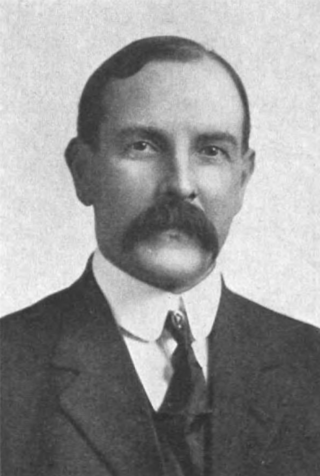
Arthur Edwin Kennelly was an American electrical engineer.
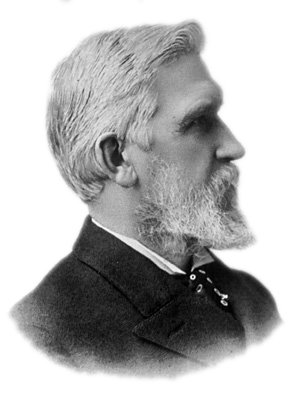
Elisha Gray was an American electrical engineer who co-founded the Western Electric Manufacturing Company. Gray is best known for his development of a telephone prototype in 1876 in Highland Park, Illinois. Some recent authors have argued that Gray should be considered the true inventor of the telephone because Alexander Graham Bell allegedly stole the idea of the liquid transmitter from him. Although Gray had been using liquid transmitters in his telephone experiments for more than two years previously, Bell's telephone patent was upheld in numerous court decisions.
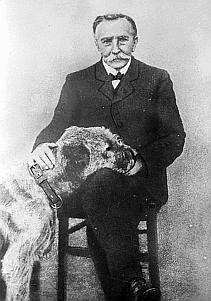
This timeline of the telephone covers landline, radio, and cellular telephony technologies and provides many important dates in the history of the telephone.
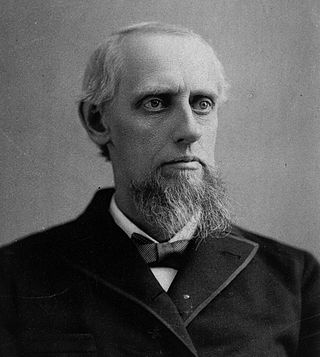
Amos Emerson Dolbear was an American physicist and inventor. Dolbear researched electrical spark conversion into sound waves and electrical impulses. He was a professor at University of Kentucky in Lexington from 1868 until 1874. In 1874 he became the chair of the physics department at Tufts University in Medford, Massachusetts. He is known for his 1882 invention of a system for transmitting telegraph signals without wires. In 1899 his patent for it was purchased in an unsuccessful attempt to interfere with Guglielmo Marconi's wireless telegraphy patents in the United States.

Sir William Fothergill Cooke was an English inventor. He was, with Charles Wheatstone, the co-inventor of the Cooke-Wheatstone electrical telegraph, which was patented in May 1837. Together with John Ricardo he founded the Electric Telegraph Company, the world's first public telegraph company, in 1846. He was knighted in 1869.
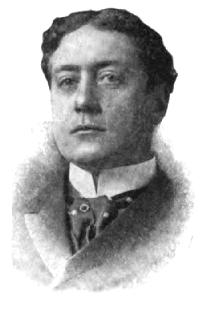
John Stone Stone was an American mathematician, physicist and inventor. He initially worked in telephone research, followed by influential work developing early radio technology, where he was especially known for improvements in tuning. Despite his often advanced designs, the Stone Telegraph and Telephone Company failed in 1908, and he spent the remainder of his career as an engineering consultant.

Edwin Holmes was an American businessman who is credited with inventing, commercializing the electromagnetic burglar alarm and with establishing the first burglar alarm networks.
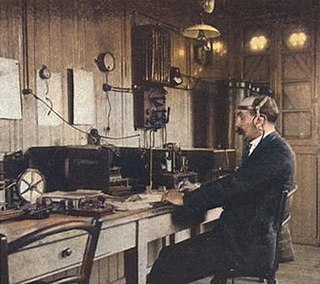
The invention of radio communication was preceded by many decades of establishing theoretical underpinnings, discovery and experimental investigation of radio waves, and engineering and technical developments related to their transmission and detection. These developments allowed Guglielmo Marconi to turn radio waves into a wireless communication system.

Moses Gerrish Farmer was an electrical engineer and inventor. Farmer was a member of the AIEE, later known as the IEEE.
Alexander Muirhead, FRS, born in East Saltoun, East Lothian, Scotland was an electrical engineer specialising in wireless telegraphy.
Patrick Bernard Delany was an Irish-American electrician and inventor. Newspaper feature coverage in 1909 called him "the world's greatest telegraph expert and inventor."
William Edward Sawyer was an American inventor whose contribution was primarily in the field of electric engineering and electric lighting.

The United States provided many inventions in the time from the Colonial Period to the Gilded Age, which were achieved by inventors who were either native-born or naturalized citizens of the United States. Copyright protection secures a person's right to his or her first-to-invent claim of the original invention in question, highlighted in Article I, Section 8, Clause 8 of the United States Constitution, which gives the following enumerated power to the United States Congress:
To promote the Progress of Science and useful Arts, by securing for limited Times to Authors and Inventors the exclusive Right to their respective Writings and Discoveries.
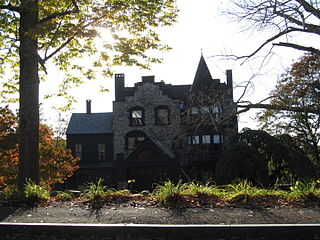
Norumbega Castle is a historic house at 63 High Street in Camden, Maine. Built in 1886-87 for duplex telegraph inventor Joseph Barker Stearns, it is one of Mid Coast Maine's most elaborate 19th-century summer houses, exhibiting a sophisticated Queen Anne style in stone and wood. It now houses the Norumbega Inn, a bed and breakfast inn. It was listed on the National Register of Historic Places in 1974.
The Norumbega Carriage House is a historic house on High Street in Camden, Maine. Built in 1886 as the carriage house for the adjacent Norumbega Castle of Joseph B. Stearns, it is now a private residence. It was designed by Norumbega's architect, Arthur Bates Jennings, and is one of Camden's finest and most unusual examples of Queen Anne architecture. It was listed on the National Register of Historic Places in 1982.













